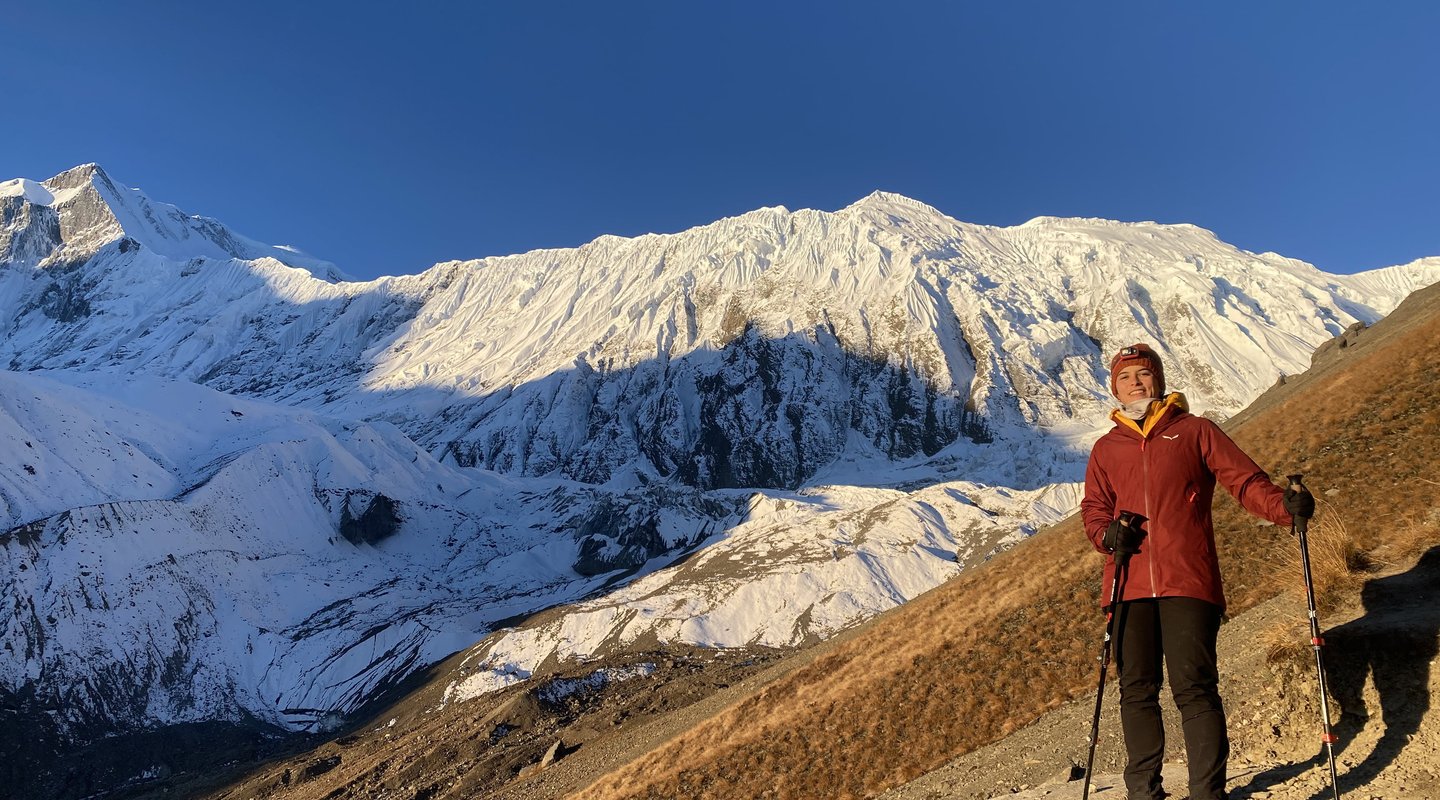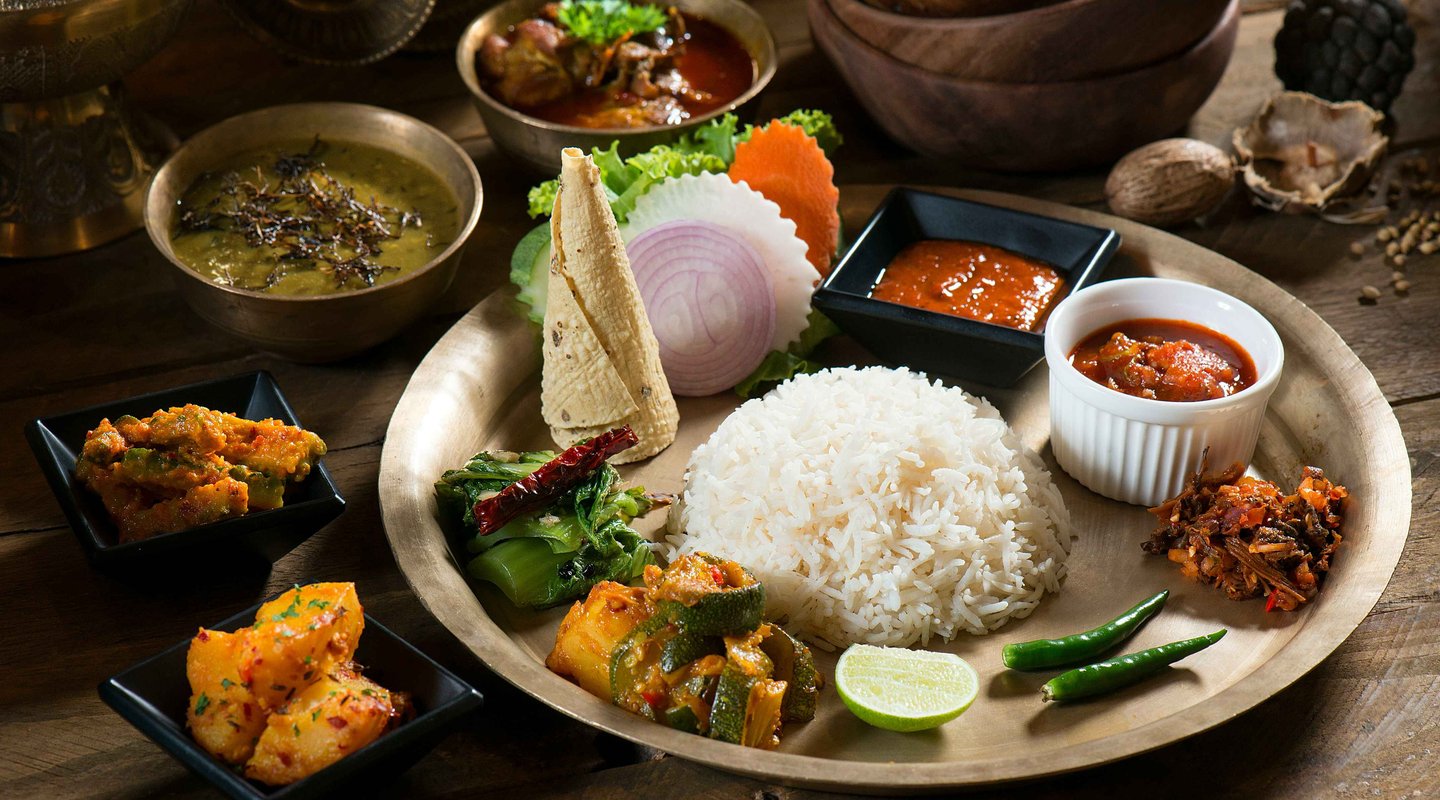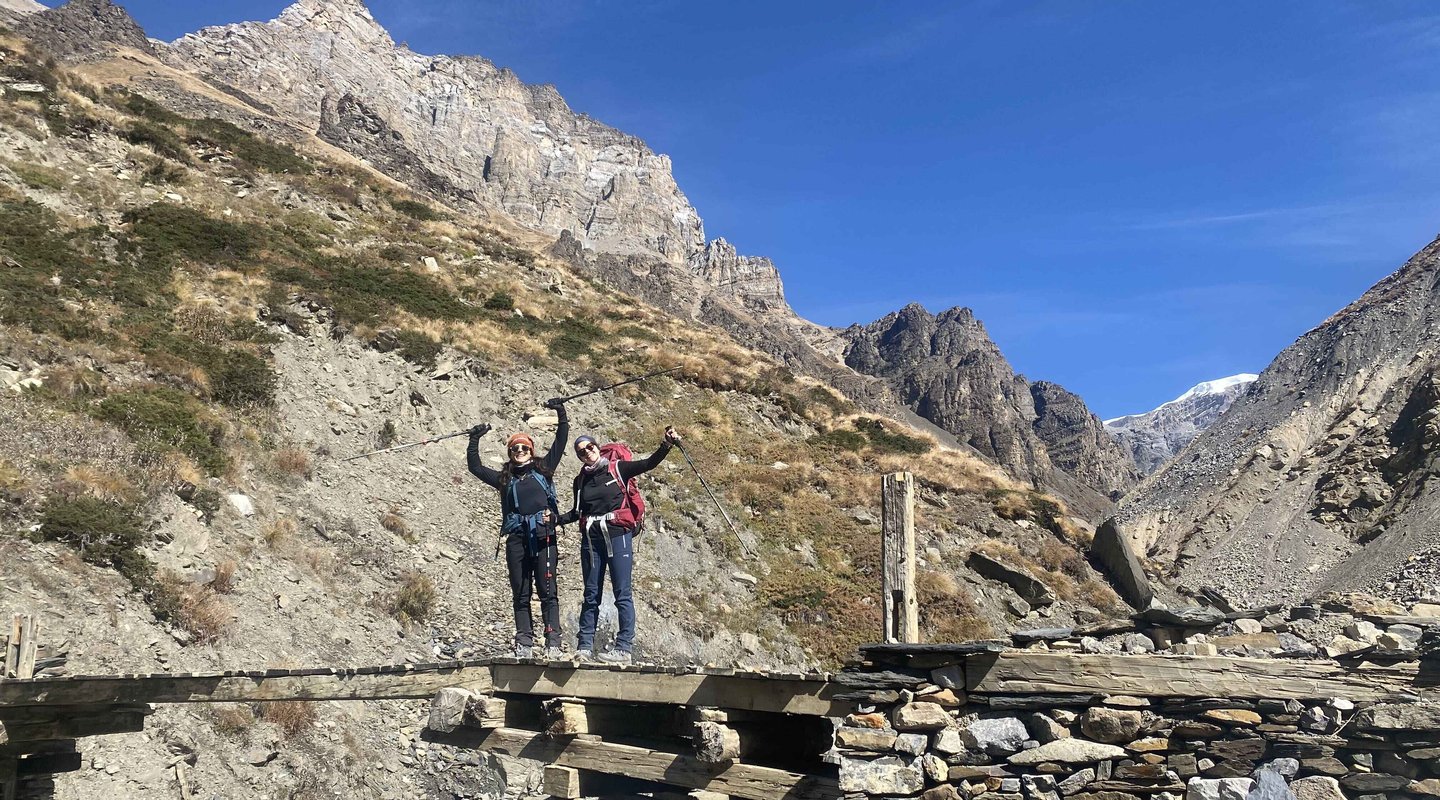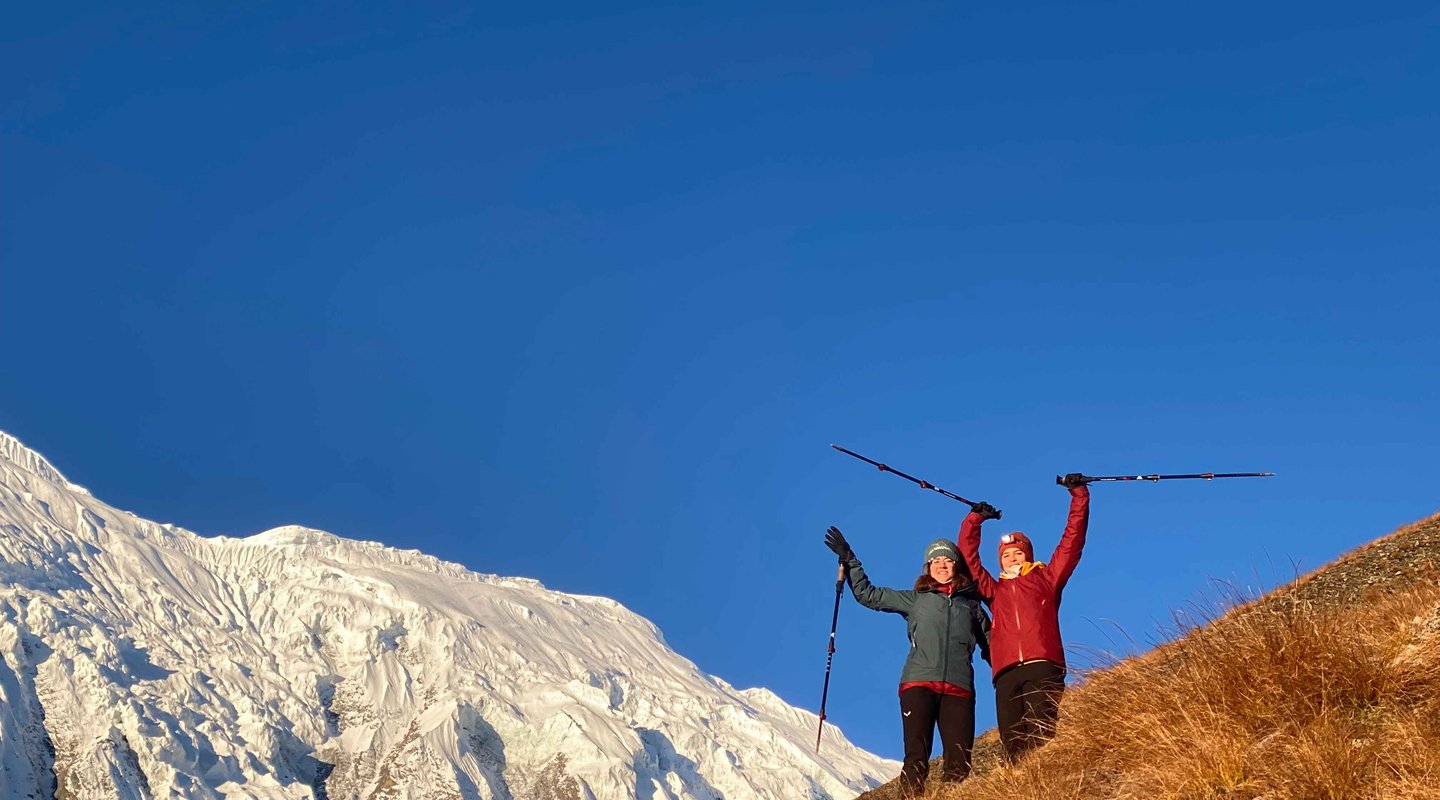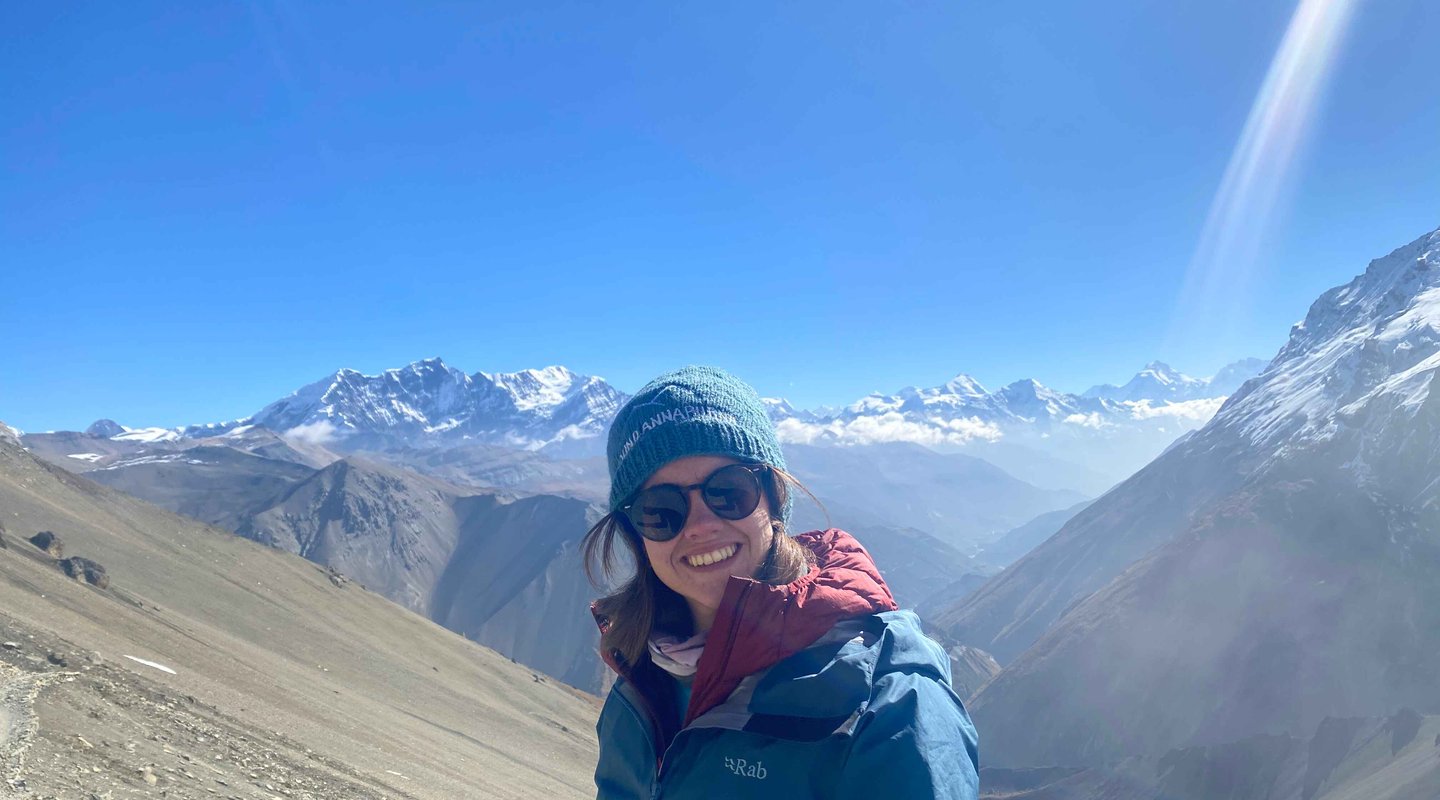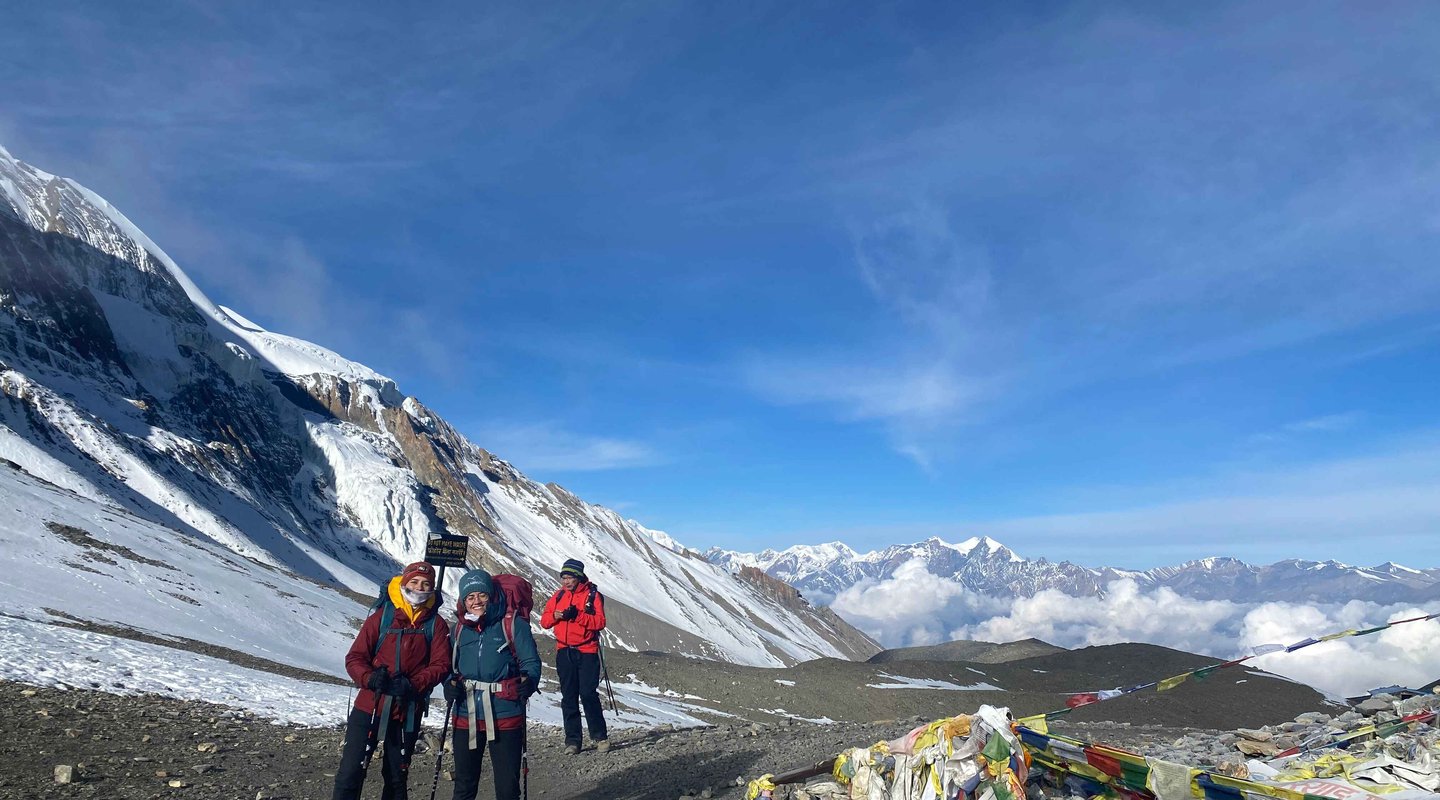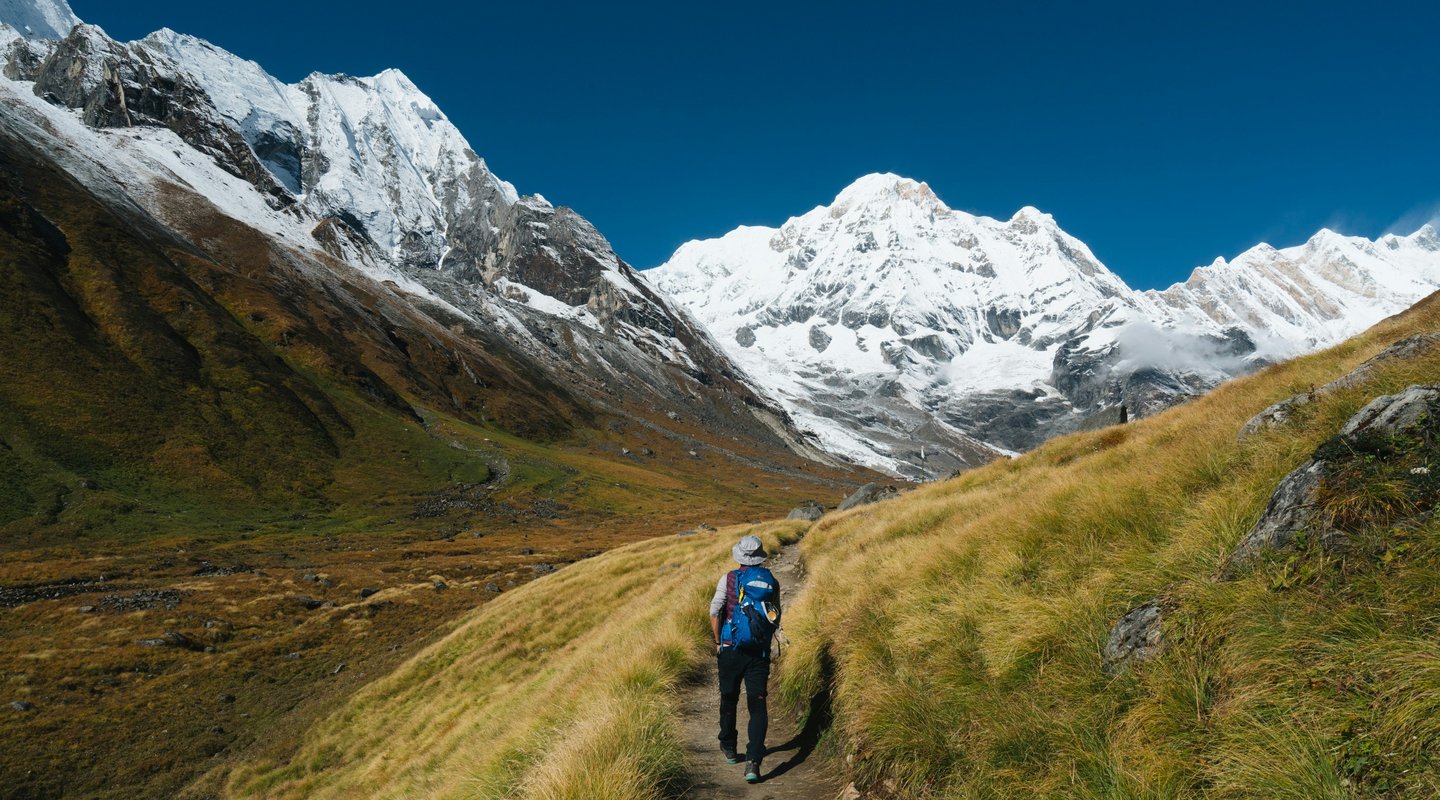
The Annapurna Circuit trek, a classic journey through the center of the Nepalese Himalayas, astounds trekkers with grand views of snow-capped mountains, contrasting landscape from subtropical valleys to desolate high-altitude deserts, and interactions with vibrant local cultures. Preplanning is required to pursue this legendary trek, and one must know the costs involved for a hassle-free and enjoyable experience. This guidebook is a detailed overview of the different expenses of undertaking the Annapurna Circuit trek to suit differing budgets and preferences, ultimately allowing prospective trekkers to budget for their Himalayan adventure as such.
The amount of time it takes to complete the Annapurna Circuit trek also varies considerably, 10 to 22 days on average, depending on a variety of things. The time has also been cited as 10-15 days by some but as a range of 12-22 days by others. The previous old route took about 23 days to complete. The length is flexible based on choices regarding where the trek begins and ends, the pace of walking, the number of acclimatization days, and whether side trips are taken. Even for a short time period of 10 days, the traveler can see the best of the circuit, which means that excellent planning can suit short-time tourists. But a more conventional method could be the 19-day route plan. The extreme difference in offered duration speaks to the adaptability of the trek, largely because of the development of road infrastructure that nowadays allows skirting sections, thus reducing potential itineraries. Furthermore, travel to side trips such as to Tilicho Lake or Annapurna Base Camp tends to add naturally to the overall duration.
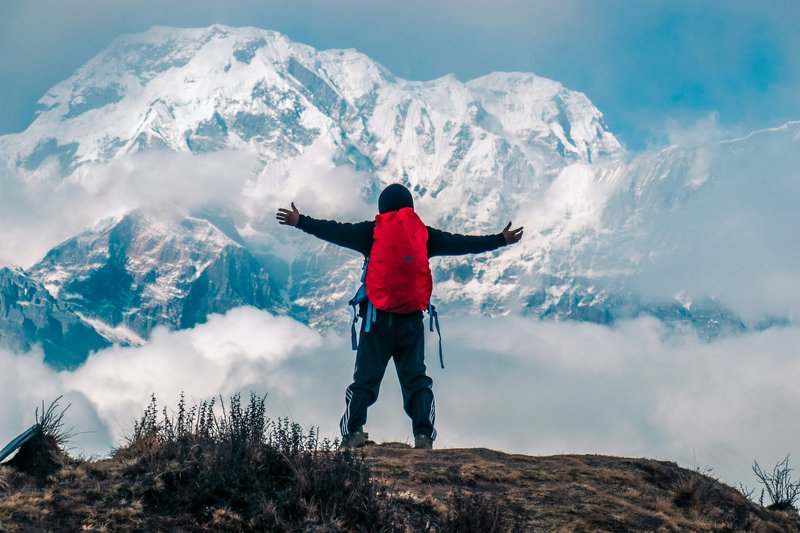
Road building has had a huge impact on the original Annapurna Circuit trail, which used to take around 23 days. Roads have been pushed to Manang in the eastern part and Muktinath in the western part, so trekkers now have the option to begin or end trekking here, effectively reducing the number of trekking days. In response to traffic on some of the road sections of the original trail, the Nepali government has devised a network of New Annapurna Trekking Trails (NATT) with blue and white or red and white marking, giving trekkers more panoramic and more attractive options than using the roads. Road construction has in effect replaced the original Annapurna Circuit trek, which used to take approximately 23 days.
Roads have approached Manang from the east and Muktinath from the west so that the trekker has the choice of ending or starting his trek here, effectively reducing by half the walking days. To balance the growth of road traffic on sections of the original trail, the Nepalese government has implemented a system of New Annapurna Trekking Trails (NATT), painted blue and white or red and white, as alternatives for trekkers to the dusty road. Outside the main loop, there are many interesting side trips and extensions that contribute to the trekking experience. One such detour is the 3-4 day hike to the stunning glacial lake of Tilicho at 4,919 meters.
Poon Hill's sunrise view of the Annapurna and Dhaulagiri ranges is another added feature, sometimes completed as part of the main circuit or as an added, shorter trek. For others willing to explore the mountain landscape a little more, such as trekking to the Annapurna Base Camp (ABC) and the Annapurna Sanctuary, extra days are available. There are also several side trips that are worth taking, like visiting the Guru Sangpo Cave, Gangapurna Lake, Milarepa Cave, and Ice Lake, each with unique cultural or natural attractions. There are even some variations of the trip that include the Annapurna Circuit with a trek to ABC, providing more in-depth coverage of the Annapurna region. That such diverse side trips are possible and that the trek can be shortened depending on road access provides a lot of planning flexibility when touring the Annapurna Circuit. That is, it also makes it challenging to estimate cost, since one of the largest cost factors for overall expense is the duration of the trek. Replacement of these shorter versions of the classic, historic Annapurna trek with these short versions represents a shift in Annapurna trek culture and availability that has a likely, near-certain effect on today's mean cost of the Annapurna Circuit.
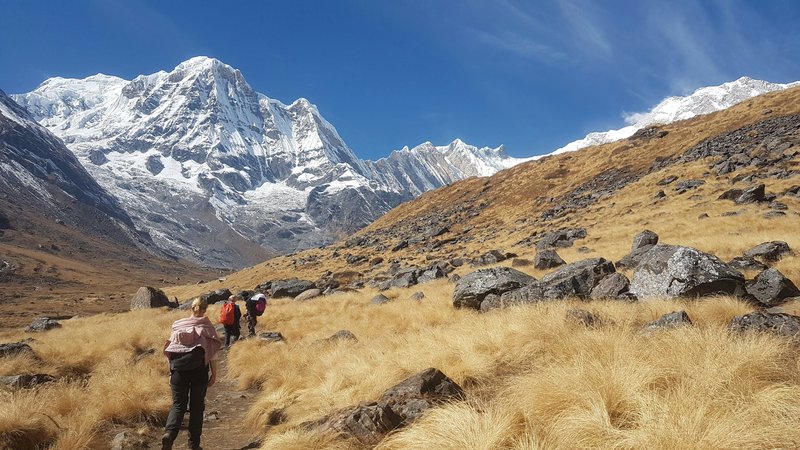
Navigating Nepal’s trekking permits can feel overwhelming, especially with changing regulations. Many trekkers struggle with unclear fee structures, where to apply, or whether they even need a TIMS card post-2025. Missing permits could derail your trek or lead to fines.
This guide clarifies exactly what permits you need, updated costs for 2025, and where to secure them hassle-free. Walk away with a checklist to start your Annapurna Circuit legally and responsibly.
- Annapurna Conservation Area Permit (ACAP): Costs & Requirements
- Foreign nationals: NPR 3,000 (~USD 23-30).
- SAARC nationals: NPR 1,000 (~USD 8) – verify latest rates.
- Purchase locations: Nepal Tourism Board (Kathmandu/Pokhara) or entry points.
- TIMS Card: Cost and Safety Regulations
- Independent trekkers: NPR 2,000 (~USD 15-20).
- Guided groups: NPR 1,000 (~USD 8-10).
- SAARC nationals: NPR 1,000 (~USD 8).
- Note: Check if TIMS is mandatory post-December 2024.
- Permit Contributions: Funds trail maintenance, conservation, and local communities.
Step into a world where every mountain retreat caters to a different style and wallet. Whether you’re a thrifty backpacker or seeking a touch of luxury after a day’s trek, this section offers a clear guide to the lodging options along the circuit. Readers will discover practical tips to balance comfort and cost, ensuring a restful and rewarding mountain experience.
- Budget Teahouses: USD 2-10/night (twin-share rooms).
- Meal purchase expected at the same teahouse.
- Mid-Range Guesthouses: USD 10-20/night (private bathrooms, Wi-Fi).
- Luxury Lodges: USD 20-30+/night (premium amenities).
- Key Tip: Higher altitude = fewer options and higher prices.
Fuel your journey with insights into local culinary delights and refreshment costs that suit every budget. This segment demystifies the daily expenses of savoring authentic flavors on the trail, making it easier for both gourmet explorers and budget-conscious adventurers to plan their meals. Expect actionable tips that help you enjoy the best of Nepalese cuisine without stretching your budget.
- Meal Costs:
- Breakfast: USD 3-15 | Lunch: USD 4-15 | Dinner: USD 5-15.
- Dal Bhat: Budget-friendly with free refills (~USD 5-7).
- Beverage Prices:
- Tea/Coffee: USD 1-7 | Bottled water: USD 1-2 (rising with altitude).
- Altitude Impact: Prices increase 20-50% at higher elevations.
Planning your arrival and departure can often feel as challenging as the trek itself. This part outlines the various transportation options—from local buses to private shuttles—highlighting their costs and conveniences. By reading on, you’ll gain clarity on how to navigate these logistics smoothly, saving both time and money while ensuring a stress-free start and finish to your adventure.
- Starting the Trek:
- Kathmandu to Besisahar: Bus (USD 6-15) vs. Private Jeep (USD 110-300).
- Besisahar to Chame: Shared jeep (USD 15-28/person).
- Ending the Trek:
- Jomsom-Pokhara flight: USD 50-160 (20 mins).
- Muktinath-Pokhara bus: USD 15 | Private jeep: USD 210.
- Pokhara-Kathmandu: Bus (USD 10-25) or flight (USD 106-125).
- Internal Transport: Local buses (USD 0.5-1/short ride) or bike rentals (price varies).
Deciding on the perfect trek length is key to optimizing your Annapurna experience. Here, we compare the nuances of a brisk 10-day trek versus a more leisurely 14-day journey, detailing the cost implications and unique experiences each option offers.
- 10-Day Annapurna Circuit Trek
- Budget: USD 555-1,035 (no guide) | USD 955-1,785 (with guide/porter).
- Mid-Range**: USD 720-1,310 (no guide) | USD 1,120-2,060 (guided).
- Pros: Lower cost | Cons: Faster pace, less acclimatization.
- 14-Day Classic Annapurna Trek
- Budget: USD 691-1,330 (no guide) | USD 1,251-2,240 (guided).
- Mid-Range: USD 920-1,725 (no guide) | USD 1,480-2,635 (guided).
- Pros: Safer acclimatization, side trips | Cons: Higher overall cost.
- Agency Packages: USD 600-2,050 (varies by inclusions).
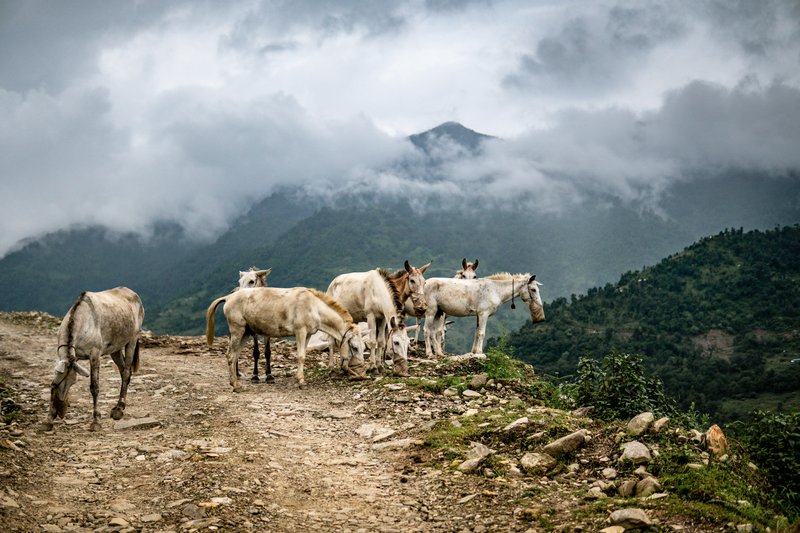
Every trekker’s dream is to explore the majestic Annapurna Circuit without overspending. In this section, discover insider strategies and practical hacks—from gear choices to meal planning—that can significantly reduce your trekking costs. By the end of this guide, you'll be armed with smart, actionable insights to maximize your adventure while keeping your budget in check.
- Permit Savings: Confirm TIMS requirements to avoid redundant fees.
- Food Strategy: Opt for Dal Bhat and avoid imported snacks.
- Transport Hacks: Use local buses and shared jeeps.
- Accommodation: Prioritize teahouses with meal-inclusive deals.
Practical Tip:
Practical Tip:
Practical Tip:
Practical Tip:
Guide (Optional):
Porter (Optional):
Practical Tip:
Practical Tip:
Without Guide/Porter (G/P):
With Guide/Porter (G/P):
Practical Tip:
Actionable Tips:
Real-World Example:
Imagine you’re planning a 10-day budget trek.
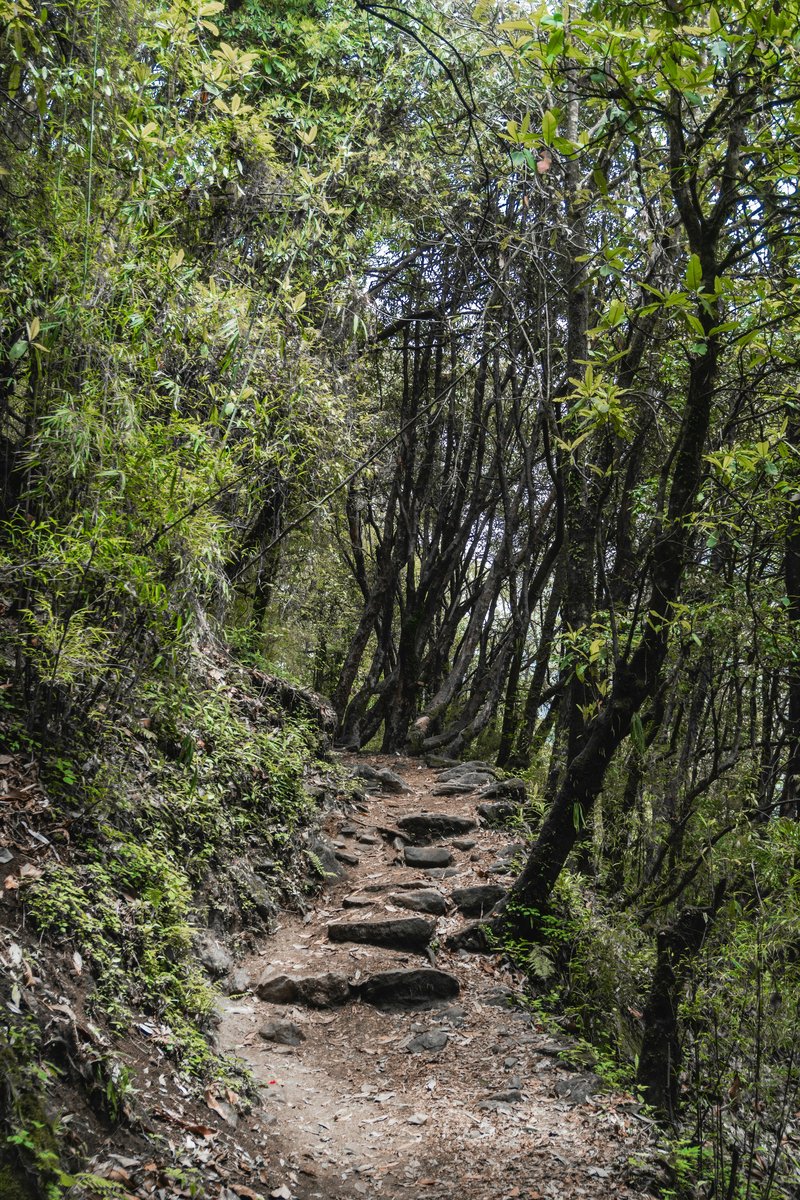
Finishing Annapurna Circuit on the cheap would translate to spending in the range of USD 20-30 a day. The approach is one of utilizing the low-cost teahouse accommodations, which might cost as little as USD 2-10 a night. The diet then comprises predominantly low-budget local cuisine such as Dal Bhat, approximately USD 4-8 per meal. Local buses and communal jeeps reign supreme for traveling, with extended trips costing anything from USD 5-15. To further cut back on expenses, budget travelers are able to hike in groups or individually to divide the expense of a guide and porter. It is less expensive to rent trekking gear in Kathmandu or Pokhara than to buy new gear. Bottled water does not necessarily have to be bought by packing a water purifier or purification tablets. The porter fees can be saved on light packs carried by solo backpackers. Off-season traveling can lead to discounts on accommodations. With these money-saving hints, the overall expense for a 10-14 day budget Annapurna Circuit trek can range between about USD 600 and USD 1200. Budgeting on essentials and making smart choices is the key to this strategy.
A mid-range budget for trekking Annapurna Circuit will range between USD 30-50 per day. This can provide stay in a slightly more costly teahouses or basic guesthouses with room tariff between USD 5 to USD 15 per day. Local and half-Western diet can be enjoyed at meals, with meal tariff between about USD 5-10. Transport can entail some mix of local and private transport for extra comfort, with the longer trips priced between USD 15 to USD 30. The mid-budget trekkers can also engage a guide and maybe share a porter with another trekker in order to divide the fees. The overall cost of a mid-range 10-14 day Annapurna Circuit trek is approximated anywhere from roughly USD 999 to as high as USD 1999 depending on packages witnessed by different trekking groups. Mid-range pricing provides more luxurious treatment, more comfortable lodging, and even greater autonomy over food choice and transport.
For the tourist who wants to experience the Annapurna Circuit in style, the price per day can quite easily run over USD 100 and is highly dependent on how much luxury one wants. The overnight stay could range from sleeping in more quality guesthouses to even luxury lodges, an overnight stay ranging from USD 20-30 or even more. The diet would also be more varied, more Western and even drinks. Transport would also include private transport along the journey, such as domestic flights if available, for maximum convenience. A private guide and porter are also included in this range of cost. Luxury treks can even incorporate side trips longer in duration and even customized itineraries. The price for a luxury 10-14 day Annapurna Circuit trek would be between some USD 2000 and some USD 4000 or more, depending on options and services.
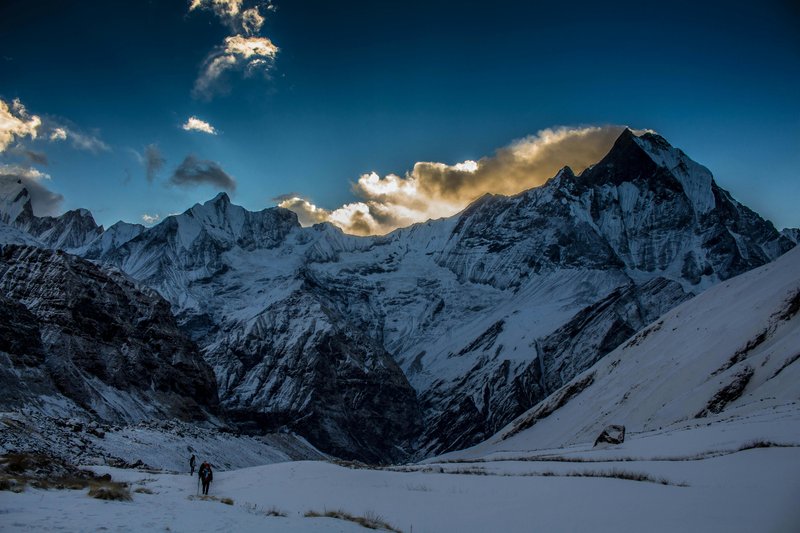
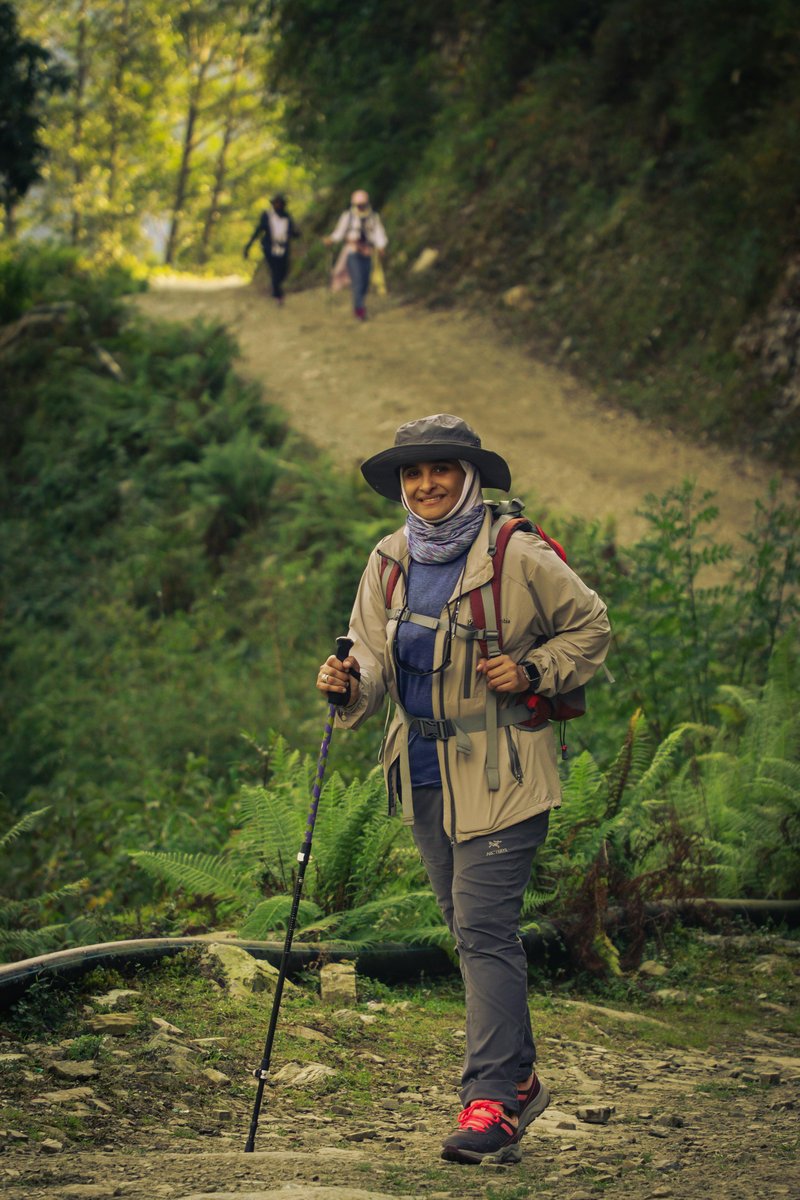
The average cost for a solo traveler undertaking the Annapurna Circuit trek can range from USD 800 to USD 2500 or more, depending on the duration, level of comfort, and whether they opt for a guided package or trek independently. Package costs for solo travelers for around 10-14 days can start from USD 800-1200, while independent trekking might be slightly cheaper but requires managing all logistics and permits individually.
A budget-friendly 10-day Annapurna circuit trek can cost approximately USD 600 to USD 1000 per person. This estimate includes basic teahouse accommodation, local meals, local transportation, and the necessary permits. This assumes cost-conscious choices and potentially trekking without a guide or porter.
For a 14-day Annapurna circuit trek with a guide and porter, the typical cost ranges from USD 1200 to USD 2500 per person. This includes permits, teahouse accommodation, meals during the trek, guide and porter fees, and transportation to and from the trailhead. The exact cost depends on the level of service and the trekking agency.
Yes, potential hidden costs for the Annapurna Circuit trek can include visa fees, international airfare, personal expenses like drinks and snacks, hot showers, Wi-Fi, battery charging, tips for guides and porters, travel insurance, and emergency evacuation costs. It's crucial to factor these into your budget.
The cheapest way to manage the Annapurna Circuit trek cost is by traveling during the off-season, staying in basic teahouses, eating local food like Dal Bhat, using local transportation, bringing your own water filter, carrying snacks, and potentially trekking independently or in a large group to share costs. Renting gear instead of buying can also save money.
A standard Annapurna circuit trek cost package typically includes permits (ACAP and TIMS), basic teahouse accommodation during the trek, meals (breakfast, lunch, and dinner) during the trek, and an experienced English-speaking guide. porter service, and transportation to and from the trek's starting and ending points. However, inclusions can vary between different trekking companies.
Planning a successful Annapurna Circuit trek requires careful preparation. Start by choosing the right season: March-May offers rhododendron blooms and clear views, while October-November brings stable weather after monsoons. Obtain necessary permits (ACAP and TIMS) in Kathmandu or Pokhara. Pack essential gear, including layers for dramatic temperature changes (from tropical lowlands to alpine passes). Acclimatize properly by following a gradual ascent schedule, especially before crossing Thorong La Pass (5,416m). Book teahouses in advance during peak seasons. Consider hiring a guide for cultural insights and navigation assistance, particularly if trekking solo. Create a day-by-day itinerary, but build in flexibility for weather changes or acclimatization days.
The prime seasons for the Annapurna Circuit are mid-September through November and March through early May. October-November (autumn) offers consistently clear skies, stable temperatures (5-20°C during the day), minimal precipitation, and exceptional mountain visibility—making it the absolute best period. March-April (spring) brings blooming rhododendron forests and warmer temperatures but occasional afternoon clouds. December-February (winter) provides empty trails and crystal-clear mountain views but requires proper cold-weather gear as temperatures drop below -10°C at higher elevations, and Thorong La Pass may become impassable after heavy snowfall. Avoid June-August (monsoon) when leeches, muddy trails, and limited visibility diminish the experience. For photographers, November delivers the clearest mountain panoramas, while April offers the most vibrant landscapes.
For Nepali citizens, the Annapurna Circuit trek costs significantly less than for foreigners. You'll pay around NPR 1,000-3,000 for ACAP and TIMS permits combined, compared to foreigners who pay approximately NPR 5,000-7,000. Accommodation costs NPR 500-1,500 per night, and meals range from NPR 300-700 each. A 12-15 day trek typically costs a Nepali between NPR 25,000-40,000 total, depending on your pace and comfort level. This includes transportation, permits, accommodation, food, and occasional extras. Going independently without guides is common for Nepalis who know the region.
Hiring guides and porters for the Annapurna Circuit is recommended for first-time trekkers. Licensed guides typically cost $25-35 per day and provide navigation assistance, cultural context, and emergency support. Porters charge $15-25 daily and carry 15-20kg of gear. Hiring through registered agencies ensures proper treatment and insurance for staff. Independent guides may offer lower rates ($20-30), but verify credentials carefully. For budget travelers, sharing guides among small groups reduces costs. Many trekkers hire only a porter and use maps/apps for navigation. During peak seasons (October-November and March-May), arrange guide services at least 2-4 weeks in advance. Always clarify what costs are included before confirming arrangements.
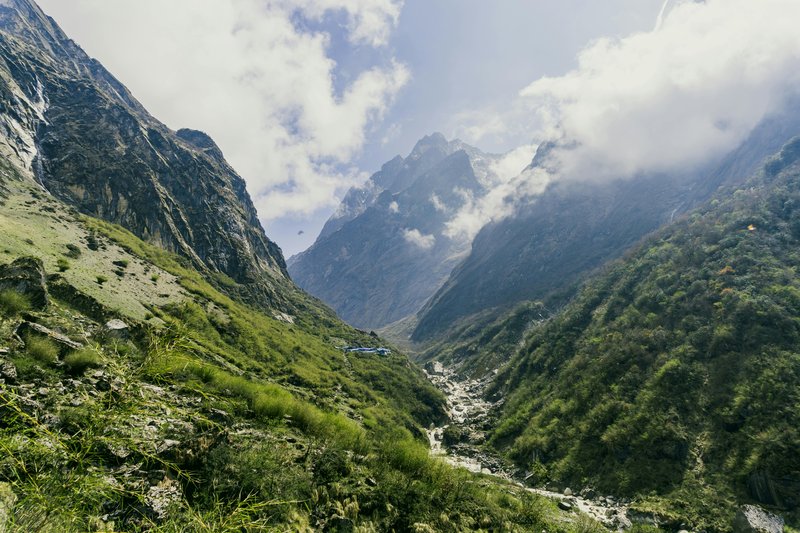
The cost of undertaking the Annapurna Circuit trek ranges depending on a universe of variables, including the duration of the trek, the quality of accommodation, food option, type of transport used, and whether one undertakes the trek alone or as part of an organized group. Factoring in necessary permits and budgeting for potential miscellaneous expenses are also central concerns of the planning process. Trekkers are also advised to perform a good analysis of different trekking options and packages on their individual needs, budget, and comfort. A buffer amount also should be left to deal with contingencies, and the best priority should be given to purchasing comprehensive travel insurance to avoid any untoward incidence or hassle on the trek. Lastly, the trek to the Annapurna Circuit is a highly rewarding journey along some of the finest scenery of the world, and with good planning and budgeting, this fantasy trek of the Himalayas can be organized for travelers belonging to any budget.
Please feel free to contact us at [email protected] or WhatsApp us at +9779801127073.
/annapurna/package/annapurna-circuit-trek-14-days-himalayan-hero-adventure
